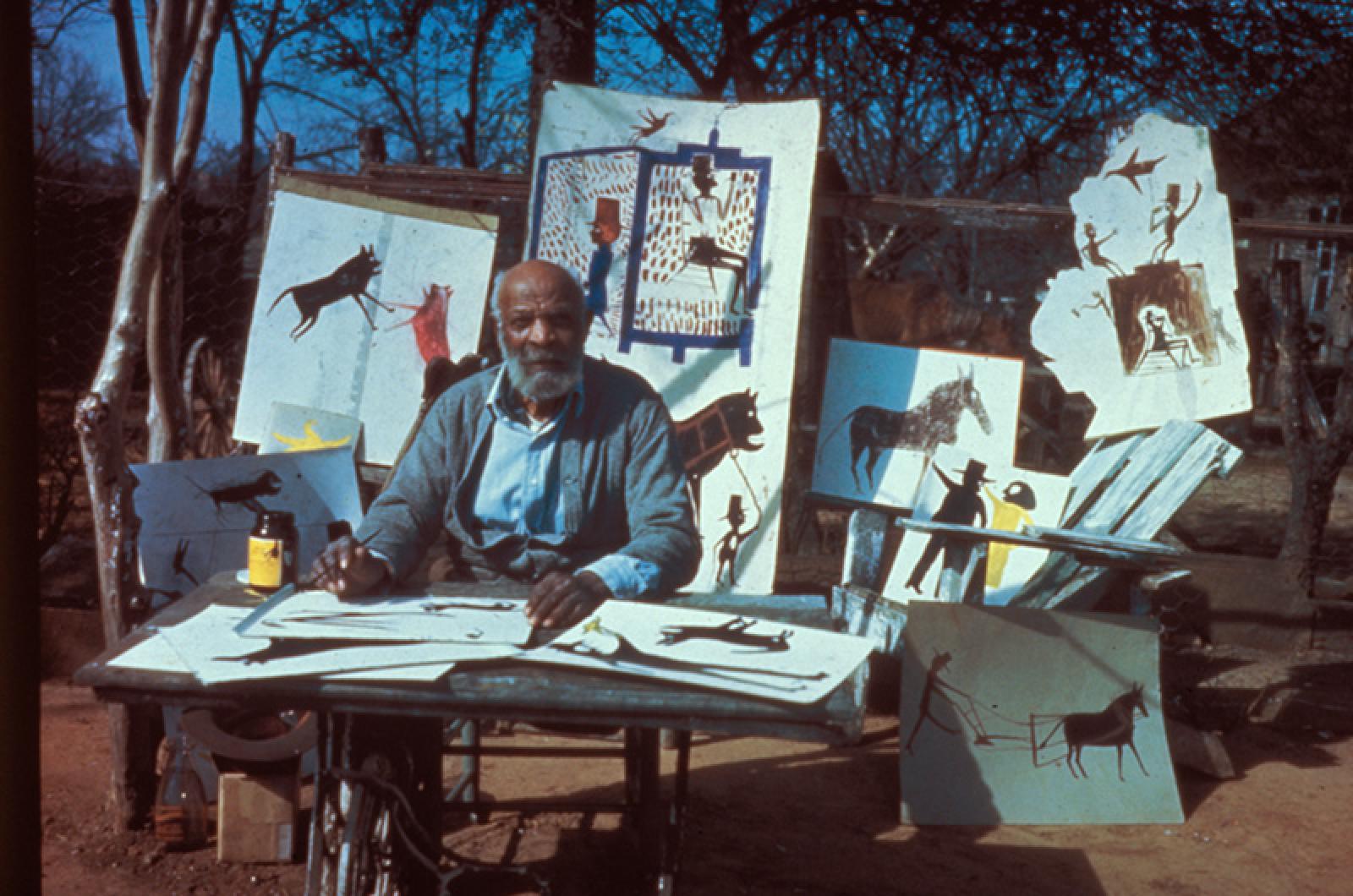Bill Traylor was born into slavery in Alabama in 1853. Later, as a free man he worked as a sharecropper, scratching a meagre existence out of the land for his growing family. When old age and infirmity took him off the farm and into the city of Montgomery he set up a stool on Monroe street, a thriving thoroughfare of black life in the 1930s and 40s.
He was in his 80s then, homeless, selling pencils for pennies and sleeping in the coffin room of the Ross-Clayton Funeral Home nearby. He had a leg amputated due to gangrene. But he was drawing, producing over 1,500 pieces during a four-year period between 1939 to 1943, some of which would eventually become part of a major art exhibit at the Smithsonian in 2018, the first solo show by a person born into slavery.
Mr. Traylor had finally arrived, in a way. Outside of certain art circles, he was still mostly unknown.
This is the story that Vineyarders Jeffrey Wolf and Fred Barron are bringing to the Martha's Vineyard Film Center on Sunday in their documentary Bill Traylor: Chasing Ghosts. The screening begins at 7:30 p.m. on July 25. There will be a Q&A with the filmmakers after the show.
For director Jeffrey Wolf, the screening is the culmination of a journey that began in the 1980s when he first encountered the art of Bill Traylor. Producer and writer Fred Barron has been chasing ghosts for the last decade, spurred on by his friend Mr. Wolf who suggested they team up on the project. It is an unlikely duo. Mr. Barron’s resume leans to the funny, having written for and executive produced television series including Seinfeld, the Larry Sanders Show, Caroline and the City, to name a few.
“I don’t do poetic. I do comedy, leave me alone,” Mr. Barron said, recalling his response to Mr. Wolf’s suggestion of collaboration in a recent interview from his home in West Tisbury.
But Mr. Traylor’s art and the untold story pulled him in.
Mr. Traylor’s images created from his memory of working on farms, of slavery and reconstruction and Jim Crow are described in the film as a mix of “cave drawings meet Picasso.” Bold colors and deceptively simplistic figures often depicted in action — working, relaxing, drinking at juke joints, arguing with spouses — tell stories that are elegiac, funny, beautiful and tragic. The self-taught artist who drew on whatever he could find lying around — scraps of cardboard, bits of paper — did not moralize. His work reflected his hard life during a particular period in the American South, stretching from slavery to the 1940s, but his art maintains a sense of playfulness and humor.
“His work is the pill for the pain,” artist Radcliffe Bailey says in the film.
The filmmakers spent about a decade researching the film. They understood that two white men from the Northeast telling the story of a largely undiscovered black artist could go horribly wrong. But no one else was telling this story and Mr. Wolf was determined to get it right.
“This guy didn’t have any training, he made up his own visual language to do it,” Mr. Wolf said. “And, it’s such a unique style and many of the great artists of our time are self taught, they have their own way of expressing art. And so many have been left out of the canon of the 20th century. Traylor’s not the only one. There are so many artists, women included.”
They moved into Montgomery, both literally and figuratively.
“Fred and I went through all the old censuses and telephone books, and we rebuilt the city of Montgomery during Traylor’s time, this four-block radius, all the stores on Monroe street and North Lawrence street. We needed to do that to process it.”
They reached out to art historians, musicians, actors and Sam Pollard who helped produce the movie in order to, as Mr. Wolf said, “find the voices, the black voices of the time,” including Zora Neale Hurston and Langston Hughes.
The West Tisbury Library played an important role too.
“A lot of the research was done here at the West Tisbury Library,” Mr. Barron said. “I kept coming in saying things like, do you have anything on cotton prices in the 1800s and they would always help me. I have to thank Laura and Emily and Kira and everyone at the library.”
Bill Traylor: Chasing Ghosts screens on July 25 at 7:30 p.m. at the Martha’s Vineyard Film Center. For tickets, visit mvfilmsociety.com.







Comments
Comment policy »